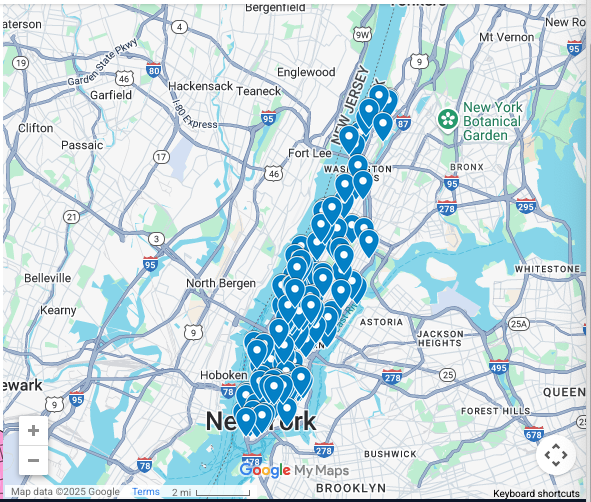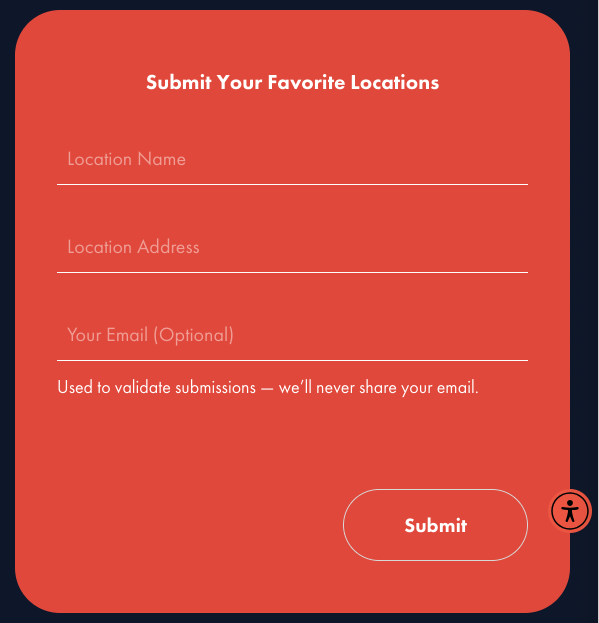Thanks to better ability to test children and adults for Autistic Spectrum Disorder, roughly 1 in 31 children in the U.S. are diagnosed to be on the spectrum by age 8. And, of course, the earlier the diagnosis, the earlier intervention can begin, to help the person with autism be their best selves.
ADHD (Attention Deficit Hyperactivity Disorder) is another diagnosis where the person who has it can be helped with different modalities, if they’re diagnosed at an early age.
The increase of appropriate diagnosis, along with non-profits designed to increase awareness of autism and ADHD, have also helped, through the years, to increase understanding and, with that, more acceptance and inclusion.
Case in point, in the travel world, many hotels are now also becoming “autism certified,” and going the extra mile for neurodiverse guests. To earn the designation, hotel teams must complete a certification program from the International Board of Credentialing and Continuing Education Standards (IBCCES) to ensure all staff have the training, tools and skills necessary to work with guests with autism or other sensory needs.
At airports, TSA offers their TSA Cares program, which provides travelers with disabilities, medical conditions and other special circumstances additional assistance during the security screening process.
Several airports now have programs to make flights more friendly and accessible for those with autism. There are programs so they can experience the airport on a day before their trip, so they can know what to expect. And some airports even offer rooms to those with neurodivergence a quiet and calming environment to decompress.
Having a quiet space to be able to calm down is terrific for those who might not be comfortable with all the hubbub of a busy airport. But when you’re on the go in the big city, it can be harder to find such a sensory oasis.
Take New York City, for example. It’s big. Loud. Lots of people (and lots of them are rushing and aren’t particularly friendly at first glance). For people who are neurodivergent, it can also be overwhelming, disorienting, and, overall, inaccessible.
A non-profit called KultureCity can help
KultureCity is a nonprofit organization which trains staff at venues and then certifies venues which have sensory inclusive modifications. It was developed in 2013 in Birmingham and has since expanded to all 50 states.
KultureCity offers an app for both iPhone and Android users, which directs users to sensory-friendly accommodations at more than 900 different venues in the U.S. The app is made to assist guests with autism and other sensory processing disorders in finding sensory friendly locations.
Their motto is: “Make the nevers possible by creating sensory accessibility and inclusion for those with invisible disabilities”.
Let’s Map Neu York
Not long ago, KultureCity introduced “Let’s Map Neu York,” where members of the community at large can offer suggestions of quiet places in NYC, where people who are neurodivergent can take a breather in a quiet, safe space.

“At KultureCity, we’ve always believed that inclusion starts with understanding, and that true accessibility is about creating spaces where people feel like they belong,” Executive Director Uma Srivastava recently told Forbes. “New York City can be a lot. For some, it’s energizing. For others, it’s overwhelming. Let’s Map Neu York was born from the idea that no one should have to navigate the city alone. By highlighting places that offer a little calm amid the chaos, we’re helping neurodivergent individuals experience NYC on their terms.”
From Forbes:
The initiative launched with a curated selection of 125 locations, many of which have received KultureCity’s sensory-inclusive certification. That includes staff training, sensory bags, and social stories that help set expectations. But just as crucially, local ambassadors contributed their quiet sanctuaries: parks, cafes, and corners of calm that might not appear on TripAdvisor, but can mean the difference between shutting down and showing up.
How it works
KultureCity offers a page where the public can offer suggestions for location submissions. They say it needs to include specific aspects:
- Lower noise level (Acknowledging that some background noise is part of city life, loud sounds such as amplified music, heavy traffic noise, or large crowds should be avoided. Natural sounds like rustling leaves or gentle water features are acceptable and can be calming.)
- Soft lighting and visual calmness (Indoor environments should avoid bright, flashing, or harsh lighting. Instead, it should have natural or dimmable lighting options and minimal visual clutter to reduce sensory overload.)
- Comfortable seating and shelter (The area should offer comfortable seating, such as benches, hammocks, or soft ground surfaces, along with shaded or covered spots where possible to provide a sense of security and reduce exposure to direct sunlight.)
- Clear signage and wayfinding (While signage will vary across locations, the area should have clear, simple signs to help visitors easily locate it. Signs with minimal text, calming colors, and recognizable symbols can help reduce confusion and stress. )
- Easily accessible (Spaces should be physically accessible, with ADA-compliant entrances and exits wherever possible. There should also not be a large barrier of noise, lights or overwhelming stimuli that create a hindrance between the space and the person.)
If the location fits the criteria, you can submit it for potential inclusion in the Neu York map.

Christopher Jackson, who originated the role of George Washington in the Broadway smash hit, Hamilton, has a child with autism.
“When my son C.J. was diagnosed with autism, my entire understanding of the world, and how we move through it, changed completely,” Jackson said. “I saw how environments can either empower or isolate. Suddenly, every restaurant, airport, or venue became something we had to prepare for, because we didn’t know if it would be manageable or overwhelming for him.”
“There’s been a real evolution in how we think about inclusion in the arts and public venues, not just who gets through the door, but how they experience what’s inside,” Jackson continued. “For neurodivergent individuals, accessibility often isn’t about stairs or doors. It’s about lighting, sound, crowds, and unpredictability. And for years, that was overlooked.”
Want to comment on this post? Great! Read this first to help ensure it gets approved.
Want to sponsor a post, write something for Your Mileage May Vary or put ads on our site? Click here for more info.
Like this post? Please share it! We have plenty more just like it and would love it if you decided to hang around and sign up to get emailed notifications of when we post.
Whether you’ve read our articles before or this is the first time you’re stopping by, we’re really glad you’re here and hope you come back to visit again!
This post first appeared on Your Mileage May Vary

2 comments
“Thanks to better ability to test children and adults for Autistic Spectrum Disorder, roughly 1 in 31 children in the U.S. are diagnosed to be on the spectrum by age 8”
Excuse me… I think THIS is the story you should be writing about.
Are you really saying, that better diagnostic methodology is the reason for 1 out of 31 kids being autistic??
I said what I said.
50 years ago, children who had problems with learning/understanding/language & communicating/socializing were labeled “mentally retarded.” Had they been tested today, when the medical community has a better understanding of, well, everything, many would have been diagnosed with autism spectrum disorder, learning disabilities, ADHD, etc.